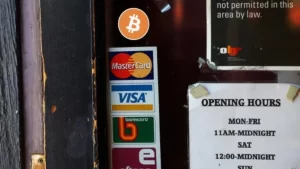Source:
By Lokesh Vij
Lokesh Vij is a Professor of BSc in Modern Computer Science & MSc in Applied Data Science & AI at Open Institute of Technology. With over 20 years of experience in cloud computing infrastructure, cybersecurity and cloud development, Professor Vij is an expert in all things related to data and modern computer science.
In today’s rapidly evolving technological landscape, the fields of blockchain and cloud computing are transforming industries, from finance to healthcare, and creating new opportunities for innovation. Integrating these technologies into education is not merely a trend but a necessity to equip students with the skills they need to thrive in the future workforce. Though both technologies are independently powerful, their potential for innovation and disruption is amplified when combined. This article explores the pressing questions surrounding the inclusion of blockchain and cloud computing in education, providing a comprehensive overview of their significance, benefits, and challenges.
The Technological Edge and Future Outlook
Cloud computing has revolutionized how businesses and individuals’ access and manage data and applications. Benefits like scalability, cost efficiency (including eliminating capital expenditure – CapEx), rapid innovation, and experimentation enable businesses to develop and deploy new applications and services quickly without the constraints of traditional on-premises infrastructure – thanks to managed services where cloud providers manage the operating system, runtime, and middleware, allowing businesses to focus on development and innovation. According to Statista, the cloud computing market is projected to reach a significant size of Euro 250 billion or even higher by 2028 (from Euro 110 billion in 2024), with a substantial Compound Annual Growth Rate (CAGR) of 22.78%. The widespread adoption of cloud computing by businesses of all sizes, coupled with the increasing demand for cloud-based services and applications, fuels the need for cloud computing professionals.
Blockchain, a distributed ledger technology, has paved the way by providing a secure, transparent, and tamper-proof way to record transactions (highly resistant to hacking and fraud). In 2021, European blockchain startups raised $1.5 billion in funding, indicating strong interest and growth potential. Reports suggest the European blockchain market could reach $39 billion by 2026, with a significant CAGR of over 47%. This growth is fueled by increasing adoption in sectors like finance, supply chain, and healthcare.
Addressing the Skills Gap
Reports from the World Economic Forum indicate that 85 million jobs may be displaced by a shift in the division of labor between humans and machines by 2025. However, 97 million new roles may emerge that are more adapted to the new division of labor between humans, machines, and algorithms, many of which will require proficiency in cloud computing and blockchain.
Furthermore, the World Economic Forum predicts that by 2027, 10% of the global GDP will be tokenized and stored on the blockchain. This massive shift means a surge in demand for blockchain professionals across various industries. Consider the implications of 10% of the global GDP being on the blockchain: it translates to a massive need for people who can build, secure, and manage these systems. We’re talking about potentially millions of jobs worldwide.
The European Blockchain Services Infrastructure (EBSI), an EU initiative, aims to deploy cross-border blockchain services across Europe, focusing on areas like digital identity, trusted data sharing, and diploma management. The EU’s MiCA (Crypto-Asset Regulation) regulation, expected to be fully implemented by 2025, will provide a clear legal framework for crypto-assets, fostering innovation and investment in the blockchain space. The projected growth and supportive regulatory environment point to a rising demand for blockchain professionals in Europe. Developing skills related to EBSI and its applications could be highly advantageous, given its potential impact on public sector blockchain adoption. Understanding the MiCA regulation will be crucial for blockchain roles related to crypto-assets and decentralized finance (DeFi).
Furthermore, European businesses are rapidly adopting digital technologies, with cloud computing as a core component of this transformation. GDPR (Data Protection Regulations) and other data protection laws push businesses to adopt secure and compliant cloud solutions. Many European countries invest heavily in cloud infrastructure and promote cloud adoption across various sectors. Artificial intelligence and machine learning will be deeply integrated into cloud platforms, enabling smarter automation, advanced analytics, and more efficient operations. This allows developers to focus on building applications without managing servers, leading to faster development cycles and increased scalability. Processing data closer to the source (like on devices or local servers) will become crucial for applications requiring real-time responses, such as IoT and autonomous vehicles.
The projected growth indicates a strong and continuous demand for blockchain and cloud professionals in Europe and worldwide. As we stand at the “crossroads of infinity,” there is a significant skill shortage, which will likely increase with the rapid adoption of these technologies. A 2023 study by SoftwareOne found that 95% of businesses globally face a cloud skills gap. Specific skills in high demand include cloud security, cloud-native development, and expertise in leading cloud platforms like AWS, Azure, and Google Cloud. The European Commission’s Digital Economy and Society Index (DESI) highlights a need for improved digital skills in areas like blockchain to support the EU’s digital transformation goals. A 2023 report by CasperLabs found that 90% of businesses in the US, UK, and China adopt blockchain, but knowledge gaps and interoperability challenges persist.
The Role of Educational Institutions
This surge in demand necessitates a corresponding increase in qualified individuals who can design, implement, and manage cloud-based and blockchain solutions. Educational institutions have a critical role to play in bridging this widening skills gap and ensuring a pipeline of talent ready to meet the demands of this burgeoning industry.
To effectively prepare the next generation of cloud computing and blockchain experts, educational institutions need to adopt a multi-pronged approach. This includes enhancing curricula with specialized programs, integrating cloud and blockchain concepts into existing courses, and providing hands-on experience with leading technology platforms.
Furthermore, investing in faculty development to ensure they possess up-to-date knowledge and expertise is crucial. Collaboration with industry partners through internships, co-teach programs, joint research projects, and mentorship programs can provide students with invaluable real-world experience and insights.
Beyond formal education, fostering a culture of lifelong learning is essential. Offering continuing education courses, boot camps, and online resources enables professionals to upskill or reskill and stay abreast of the latest advancements in cloud computing. Actively promoting awareness of career paths and opportunities in this field and facilitating connections with potential employers can empower students to thrive in the dynamic and evolving landscape of cloud computing and blockchain technologies.
By taking these steps, educational institutions can effectively prepare the young generation to fill the skills gap and thrive in the rapidly evolving world of cloud computing and blockchain.
Read the full article below:
Check out OPIT degrees
-
Career aligned
-
Fully Online
-
EU-accredited institution






